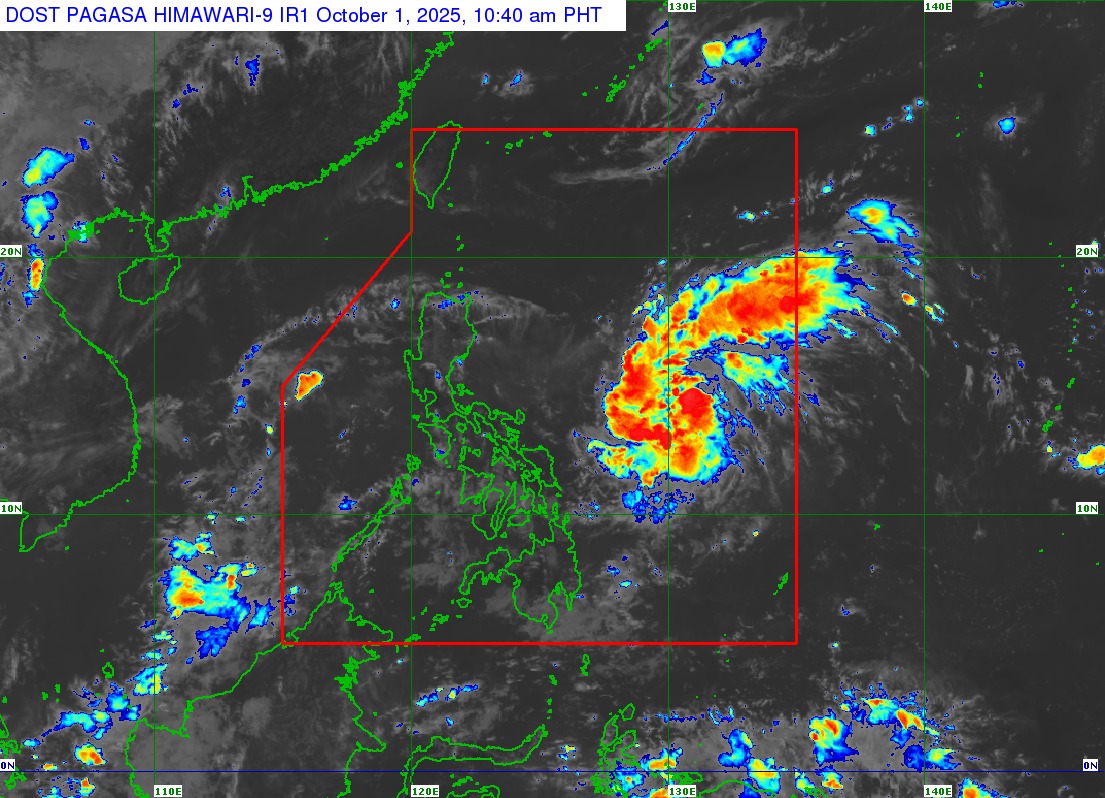
By Brian Campued
The low pressure area east of Southern Luzon developed into a tropical depression on Wednesday morning and was given the name “Paolo”.
As of the 11:00 a.m. bulletin of the state weather bureau, Tropical Depression Paolo was monitored 760 km east of Virac, Catanduanes. It is moving westward at 25 kph with maximum sustained winds of 45 kph and gustiness of up to 55 kph.
According to the Philippine Atmospheric, Geophysical and Astronomical Services Administration (PAGASA), Paolo is less likely to directly affect the weather in the country in the next 24 hours.
However, Paolo will continue to intensify over the Philippine Sea and may reach up to severe tropical storm strength by Friday, Oct. 3, with potential landfall scenario over Isabela or northern Aurora on the same day.
According to PAGASA Weather Specialist John Manalo, Paolo’s track may also change due to the cone of probability in the forecast. It may either shift upward or downward from its current main track.
“Katulad nung nangyari kay Opong, meron din pong high pressure area ngayon dito sa southeastern part ng China na puwedeng tumulak pababa dito kay Bagyong Paolo kaya posible pa na mas bumaba yung track nito,” Manalo said in a public briefing.
“Also, dahil may kabilisan po itong Bagyong Paolo, by Saturday morning ay nasa labas na ito ng Philippine area of responsibility (PAR),” he added.
Onset of heavy rains may also be felt by Friday onwards over Northern Luzon and portions of Central Luzon, PAGASA added.
Tropical Cyclone Wind Signal (TCWS) No. 1 may also be hoisted over the eastern sections of Northern and Central Luzon within the day, with Wind Signal No. 3 the highest TCWS likely to be raised throughout Paolo’s passage.
PAGASA may also issue a storm surge warning to advise residents in low-lying coastal areas about potential risk of flooding as well as a gale warning to warn mariners on dangerous sea conditions caused by Paolo.
Meanwhile, the Department of the Interior and Local Government (DILG) urged local chief executives to prepare for the possible impact of the tropical cyclone, especially on areas still reeling from the aftermath of Mirasol, Nando, and Opong.
In its advisory, the DILG urged local government units to maintain close coordination with their respective Regional Disaster Risk Reduction and Management Councils and implement preparedness measures and intensify public information campaigns.
According to PAGASA, two to four tropical cyclones are expected to develop within or enter the PAR this October.
-jpv
